What is appendix?
The appendix is a small thin finger-like pouch located on the right side of the abdomen as a small extension attached to the colon (Large intestine).
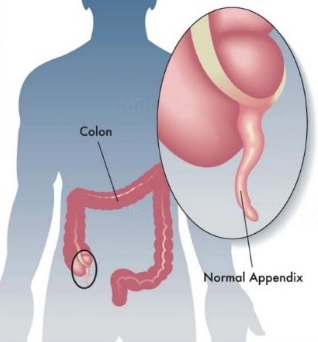
What is appendicitis?
When the appendix gets blocked or infected, it is called appendicitis. Appendix gets swollen and inflamed. When not treated, it gets ruptured and leads to situations that are life-threatening. A ruptured appendix spills all its content into the surrounding tissues or inflammation of the abdominal lining leading to peritonitis and sepsis, in turn leading to organ failure and death. This happens only if not treated in time.
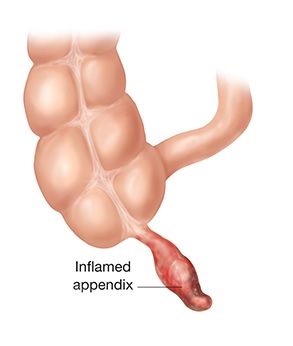
What are the Types of Appendicitis?
- Sub acute Appendicitis: Mild pain which subsides with medication.
- Acute Appendicitis : Severe pain will require surgery.
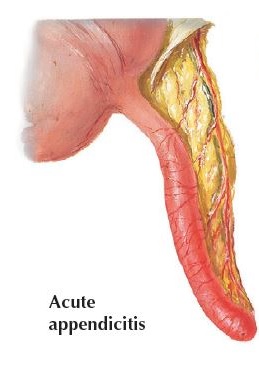
- Chronic Appendicitis : Repeated attacks of mild pain.
- Acute on chronic Appendicitis: Severe pain in a person suffering from chronic appendicitis
Where does a person get pain in appendicitis?
- At first, pain starts all over the abdomen, then localizes to one area depending on the position of the appendix.
- Depending on the positions of the appendix, the pain in the abdomen will differ. The appendix could be retrocaaecal, paracaecal, then the pain will be in the Right iliac foaasa (right lower abdomen)
- If it is pelvic in position, the pain will be in the lower abdomen, suprapubic area and may be associated with burning in urine or lose motions.
Who can get appendicitis?
Any person can get appendicitis but it is commonly observed between 10 to 30 years of age and men have a higher risk than women. Young children & elderly people are prone to complications.
What causes appendicitis?
Appendicitis can be caused by many reasons, and none of it is a definitive cause. Medically any obstruction in the appendix or accumulation of faecal material may lead to obstruction. Many other things that may be the cause of appendicitis are Tumors, Worms, Enlarged lymphoid follicles, Trauma.
What are the symptoms appendicitis?
The major symptom is a pain in the lower right-hand side of the abdomen. Other symptoms to look out for are - loss of appetite, pain around the belly & abdomen tenderness, vomiting, diarrhoea, constipation or gas, Fever, pain in places like the back, or rectal area, indigestion, pain during urination. In children who are below 2 years, the parents need to look out for symptoms like vomiting, abdominal bloating/ swelling, tender abdomen.
Complications of appendicitis?
Appendicular abscess, gangrenous appendicitis, appendicular perforation, peritonitis with sepsis are the complications that can happen if not treated in time or if the infection is severe and immunity is low.
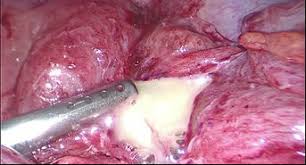
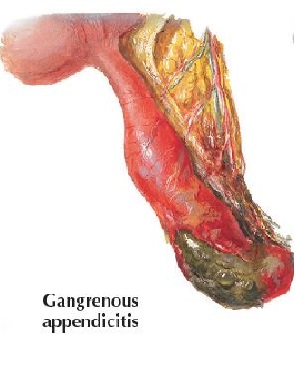
What investigations need to be done?
Some blood tests along with an Ultrasound scan of the abdomen and pelvis and in rare cases CT abdomen would be required to diagnose appendicitis.
Once the surgery is required, then further tests will be required for anaesthetic
fitness.
How to treat appendicitis?
Mild appendicitis can be treated with antibiotics. Choosing this option must be in circumstances where the person is not eligible for surgery or due to some serious medical conditions or if the patient is a woman in her first
trimester of pregnancy.
The other safer and sensible option is surgery. Also called appendecectomy, which is a common procedure and can be done by both Open surgery as well as Laparoscopic Surgery. With the advance
in laparoscopy, a laparoscopic approach is taken. It is the best approach requiring 1 to 2-days hospital stay. Does not require much rest and the patient can resume work within 2 to 3 days.
Appendectomy –
- Open surgery method: PIC
- Laparoscopic Appendectomy:
appendectomy open surgery.
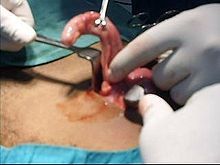
Laparoscopic Appendectomy:
Laparoscopic appendectomy procedure requires the patient to be in the hospital for a maximum of 1-2 days. Sometimes discharge happens on the same day as the surgery.
This procedure involves making three tiny cuts on the abdomen to insert instruments and a camera and through these instruments, the surgery is performed internally.
Benefits of Laparoscopic Appendecectomy over open appendicectomy include:- Less or no pain.
- Less hospital stay.
- Quick healing & fast recovery.
- Cost effective.
- Less post operative complications like incisional hernia.
- Minimal scarring and has cosmetic advantage.
- Less chances of infection due to external factors.
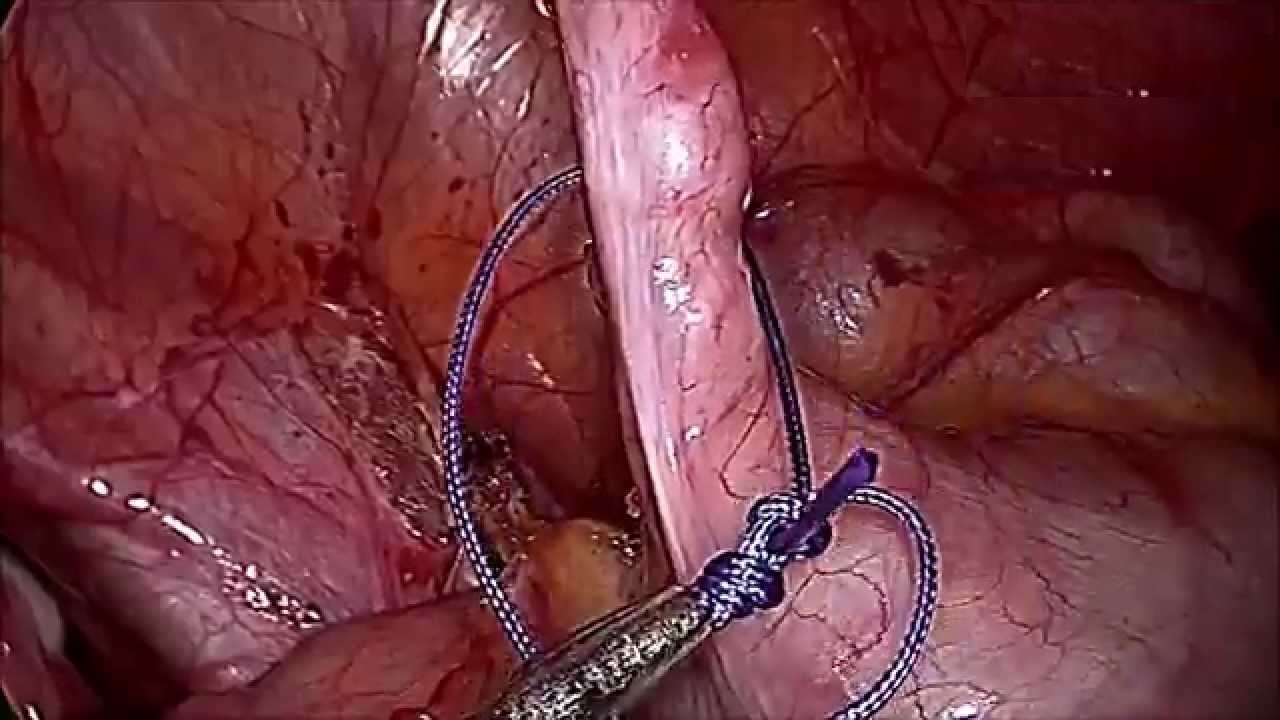
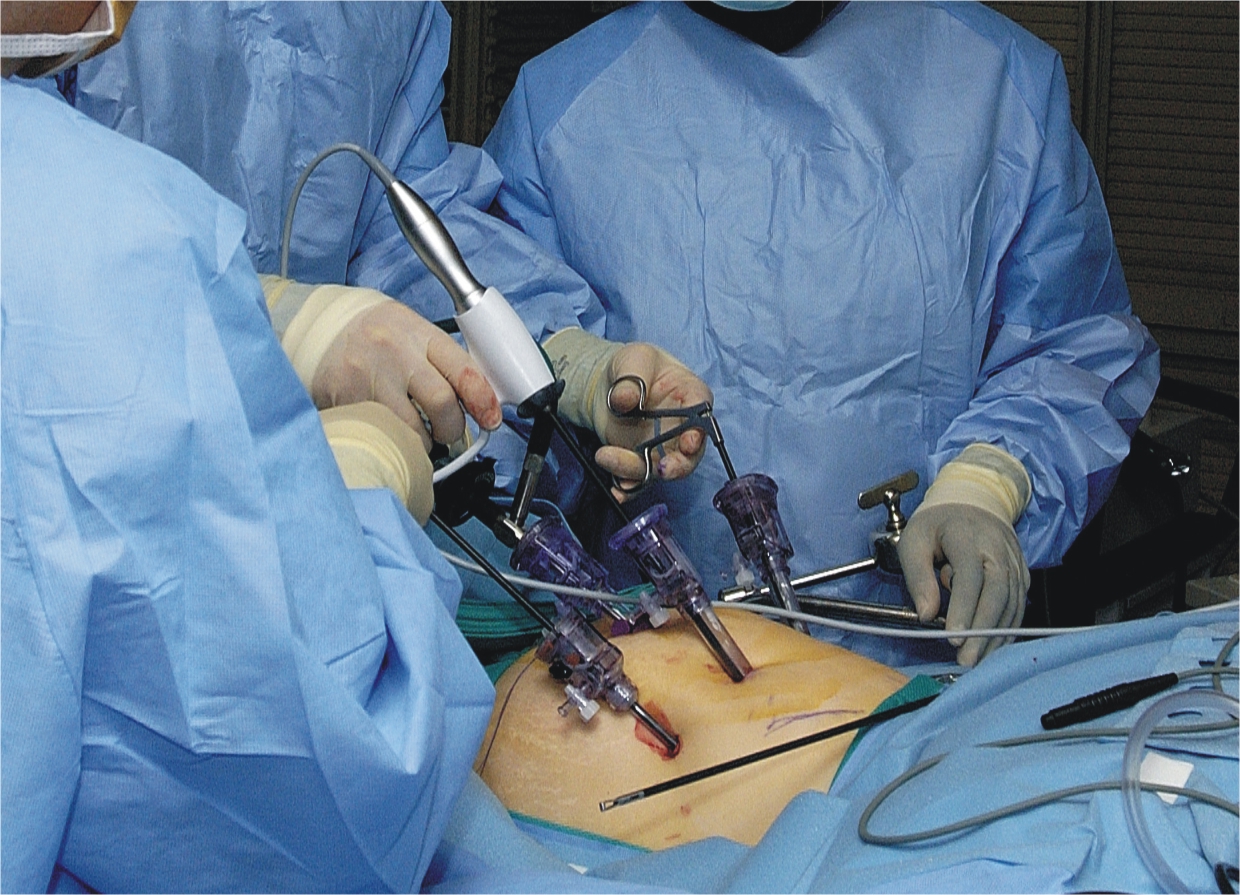
- positions of appendix.
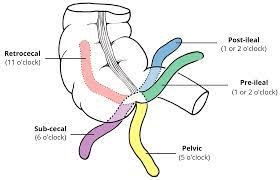
Appendix can have different positions. Paraolic, retrocolic, pelvic, preileal, pistileal, subcaecal